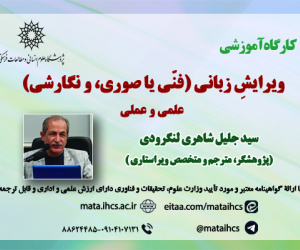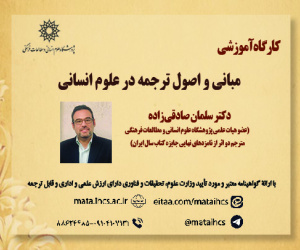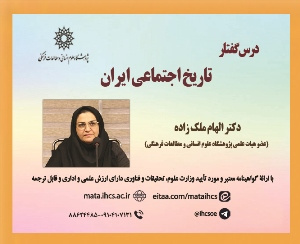نقش طلاق در تغییر ترتیبات زندگی با تأکید بر تمایزات جنسیتی (مقاله علمی وزارت علوم)
درجه علمی: نشریه علمی (وزارت علوم)
آرشیو
چکیده
طلاق یکی از عوامل اصلی در تنوع بخشیدن به ترتیبات زندگی خانوادگی در دوران معاصر بوده است؛ با این حال اثر طلاق بر ترتیبات زندگی در ایران مطالعه نشده است. در مطالعه حاضر با تحلیل داده های پیمایش ملی طلاق، الگوهای سکونت افراد (5054 نفر) پس از طلاق بررسی شده است. نتایج نشان داد که 40 درصد مردان و 18 درصد زنان پس از طلاق، به تنهایی زندگی می کنند. بیشتر زنان مطلقه زندگی به همراه خانواده پدری را انتخاب کرده اند. داشتن حضانت فرزندان از علت های اصلی زندگی به همراه فرزندان و تشکیل خانوارهای تک والد است؛ با این حال آنها وضعیت اقتصادی مطلوبی ندارند؛ به طوری که بیشتر مادرانِ سرپرست فاقد مسکن، غیرشاغل و بدون درآمد ثابت هستند. وضعیت اقتصادی یکی از مهم ترین عوامل در نحوه ترتیبات زندگی زنان و مردان پس از طلاق است و افراد شاغل با مسکن ملکی، بیش از دیگران به تنهایی زندگی می کنند. با توجه به روند صعودی میزان های طلاق و افزایش خانوارهای تک نفره و تک والد ناشی از آن، اجرای سیاست های حمایتی به ویژه برای خانوارهای زن سرپرست ضروری است. همچنین به منظور درک بهتر پیامدهای طلاق برای ترتیبات زندگی، مطالعات تجربی که به روش های طولی و یا کیفی انجام شده باشد، ضروری است.The Role of Divorce on Changes in Living Arrangements, Focusing on Gender Differentials
Introduction Although the consequences of divorce for family members have always been noted, the diversity of residence patterns after separation is still not well comprehended. This is while divorce is one of the main factors in living arrangements with diversity in contemporary societies. The increase in the share of single-parent households, step-families, and one-person and composite households is one of the signs of this variety (Fallesen and Gähler, 2020). Increasing divorce rate is a global trend (Gonzalez et al., 2009) and Iran has followed this trend (Sadeghi Fasaei and Ithari, 2013). Despite all the social policies and cultural planning during recent decades, the number of divorces is increasing in Iran (Statistical Centre of Iran, 2021). The studies have also indicated that the share of single-person and solo households due to divorce has increased in the last decade (Bagi and Abbasi-Shavazi, 2019); however, the effects of divorce on the living arrangements of couples and their children is neglected. This research gap is rooted in the fact that the relevant literature has not yet fully recognized this heterogeneity despite the emergence of new family types and thus, less effort has been made to observe and investigate this issue. Another reason for this negligence is the lack of reliable data. Since there were no longitudinal surveys about living arrangements in Iran, we sought to determine the residence patterns of divorced people after separation by using cross-sectional survey data to fill part of this research gap. Therefore, the present study examined the effects of divorce on the residence pattern of divorced men and women. It was endeavoured to answer the following questions: How will the living arrangements be after divorce? What percentage of the divorced people plan to live alone? What are the main determinants of the decision to live alone? Are there any differences in the living arrangements of divorced males and females? And what are the characteristics of the parents, who have custody of the step-children? Materials & Methods We analyzed the data of National Divorce Survey by using the secondary analysis technique. The statistical population included the people, who had applied for registering their divorce in the provincial divorce offices. The sample size was made of 4054 people. The data collection tool was a researcher-made questionnaire. The data were collected by the questioner directly referring to the respondents. Two questions were used to specify the living arrangements of the divorced people after divorce: Will you live with someone after the divorce? And who will you live with? The answer to the first question had two options: yes and no. The second question was asked from those who chose yes, while those who chose the latter had planned to live alone. Discussion of Results & Conclusions Most of the divorced males preferred to live alone. The findings showed that 40% of the men and 18% of the women lived alone after divorce. It could be due to the cultural context of the Iranian society as living alone for women, especially the young divorced ones, was not acceptable. The older divorced males also had a more tendency to live alone compared to the older females. None of the older women wished to live alone, which could be due to the fact that older women need more economic support from family. Female economic participation and employment rates are low in Iran (Qavidel, 2018 and Keshavarz Haddad & Alaviyan, 2019) so that they do not have any salaries or pensions in their old ages. Therefore, economic dependence is one of the most important reasons that older women decide to live with their relatives instead of living alone. Living with relatives after divorce is common in countries that have high familism and appreciate strong family values like Iran. The results revealed that most of the divorced women had chosen to live with their paternal families (54.3%). Returning to father’s home is the second option for males. As Sweet (1972) points out, having relatives and availability of parents are a key variable. People whose parents are still alive are more likely to return to their homes after separation. We observed that more than 75% of the people, who decided to return to their fathers’ houses were less than 30 years old. One of the most important factors, which affect coresidence with relatives, is having a child. Custody of children has led parents towards living with their children and form single-parent families. Nevertheless, they usually have a poor economic situation. In particular, most mothers are unemployed and more than half of them do not have a fixed income and a personal house. Considering the upward trend in divorce rates and the increase in solo and single-parent households, supportive policies and programs are necessary, especially for female-headed households. Empirical studies conducted via longitudinal and qualitative methods are also essential for better understanding the consequences of divorce on living arrangements.





